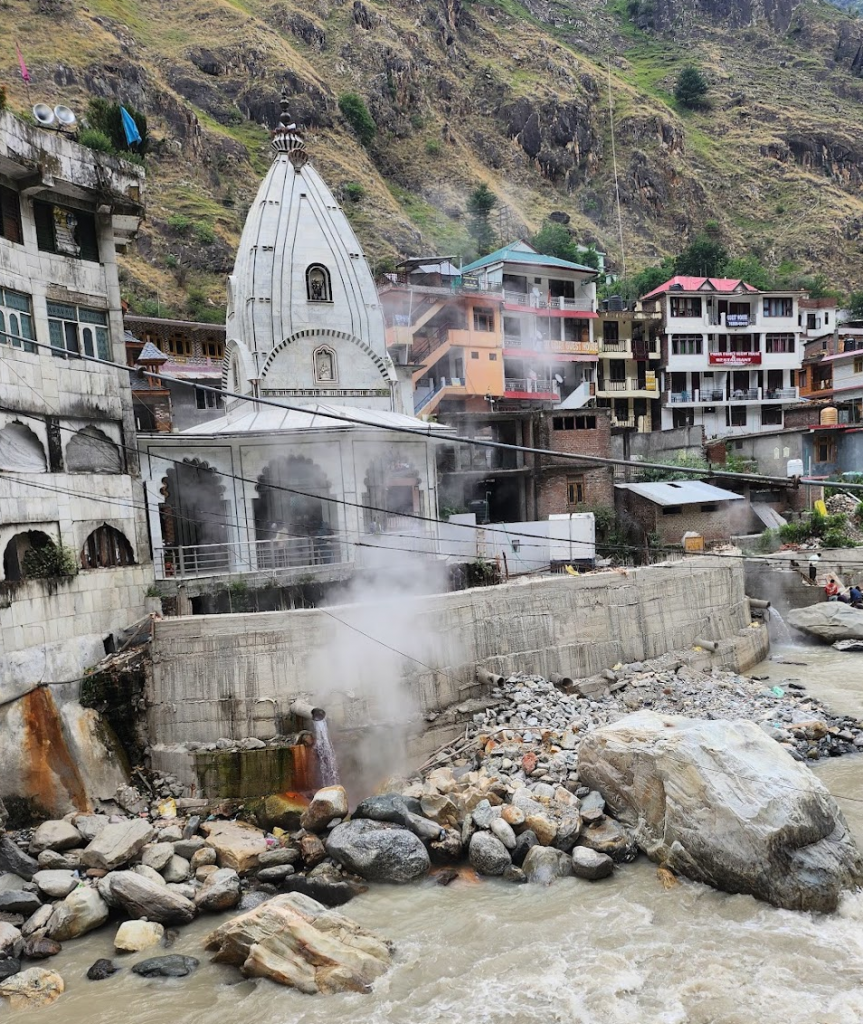The geothermal potential of thermal waters in Manikaran, Himachal Pradesh, India, is significant due to its high-temperature springs, favorable geological setting, and sustained heat flow from the Earth’s crust. Here’s a comprehensive overview:
🔥 Overview of Manikaran Geothermal Site
- Location: Parvati Valley, Kullu District, Himachal Pradesh, India
- Altitude: ~1,760 meters (5,774 feet)
- Famous for: Hot springs, religious pilgrimage (Hindu and Sikh), hydrothermal activity
🌡️ Thermal Spring Characteristics
| Parameter | Description |
|---|---|
| Temperature | 85–96°C (surface), can reach ~120°C at depth |
| Discharge Rate | ~500–550 liters/minute (varies seasonally) |
| Chemical Composition | High in sodium, bicarbonate, silica, and sulfates |
| pH Value | Slightly alkaline (~7.0–8.2) |
🧪 Geochemical Analysis
The waters are typically Na-HCO₃-Cl type, indicating:
- Deep-seated origin
- Water-rock interaction at high temperatures
- Stable geothermal reservoir
Geothermometric estimates (Na/K, silica-based) suggest subsurface reservoir temperatures of ~150°C to 200°C.
🌍 Geological Setting
- Tectonic Zone: Main Central Thrust (MCT) of the Himalayas
- Rock Types: Metamorphic rocks, schists, and gneisses with fault zones
- The geothermal system is fault-controlled, allowing deep water circulation and heating.
⚡ Geothermal Energy Potential
- Estimated Potential: 2–5 MW (megawatts) of electricity, or higher for direct-use applications
- Suitable Uses:
- Small-scale power generation (binary cycle plants)
- Space heating (especially in cold months)
- Greenhouse agriculture
- Balneology and tourism
🔬 Research and Development
- Surveyed by Geological Survey of India (GSI) and MNRE (Ministry of New and Renewable Energy)
- Identified as a “promising geothermal field” under India’s geothermal resource map
- Field studies suggest feasibility for pilot-scale energy projects
⚠️ Challenges
- Seismic sensitivity of Himalayan terrain
- Infrastructure limitations in remote areas
- Environmental and religious considerations, as the site is sacred
✅ Recent Developments
As of recent years:
- The Indian government has shown renewed interest in exploring geothermal energy in Himalayan regions.
- Pilot projects have been proposed under MNRE geothermal energy initiatives.
- Private sector collaboration and clean energy goals (Net Zero ambitions) may drive future investments.
📌 Conclusion
The Manikaran geothermal springs represent a high-potential renewable energy resource in India, especially suited for direct thermal uses and pilot-scale power generation. With proper investment, technology, and environmental safeguards, Manikaran could become a model for sustainable geothermal utilization in the Himalayas.

